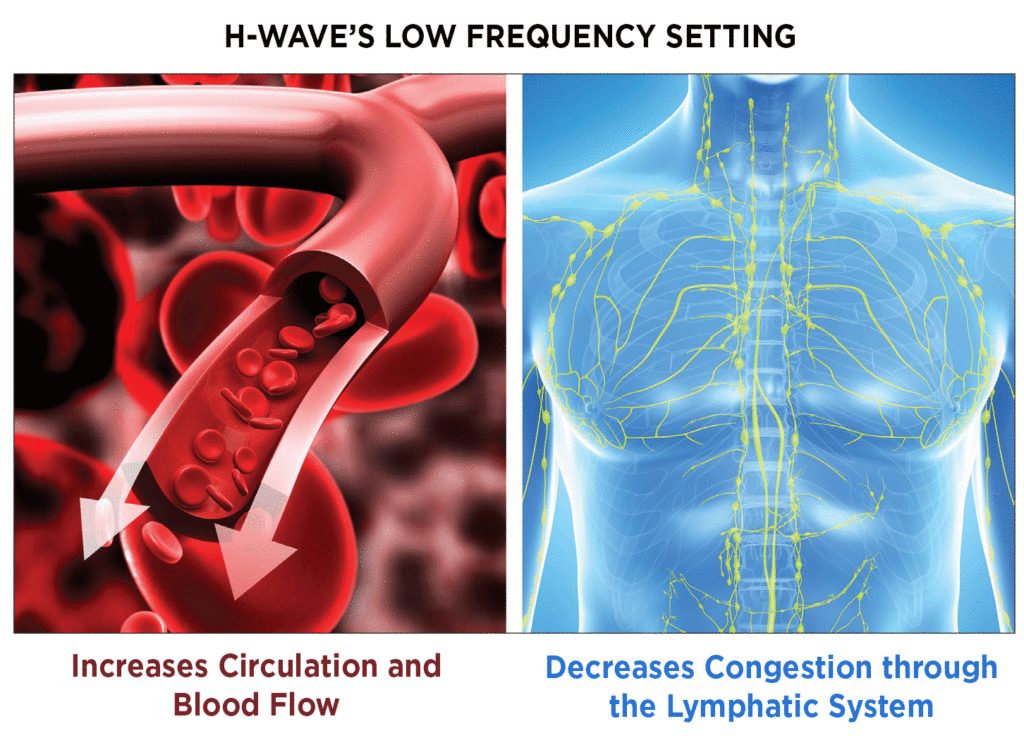Post-Op Recovery Protocols with Kelly Starrett
Kelly Starrett of The Ready State (TRS), reviews the surgical protocols for post-op recovery that he and his team use on all the clients, athletes, and patients that they work with; and how he integrates H-Wave® OTC into these protocols.
Although it can be easy to get caught up in all that is involved with a surgery, such as scheduling, time off work, proper diet to aid healing, surgical interventions, and the plan for recovery; we want to remember that the NUMBER ONE GOAL is:
To restore motion and function back to your body, and more granularly, back to the tissues that need surgical repair.
So in the initial stages of physical rehabilitation directly after surgery, what we’re mainly trying to do is decongest the surgical site. We ask ourselves, “How are we going to evacuate the swelling from the area and get blood flow back into the tissues?” We know that many surgical patients run into problems such as surgical inhibition or pain inhibition which leads to poor musculature re-engagement due to the natural downregulation that your body will perform. Your brain wants to protect those tissues from being further strained, so it will downregulate function in that area to reduce forces that could potentially aggravate the tissues. But, if we can keep the muscular system tied back to the brain early in the rehab process, then we have a much better chance for faster recovery times.
What we notice with our patients when we’re able to manage congestion properly during post-op recovery is:
- There’s a lot less pain (for most people)
- There’s much less need for pain medications since we don’t have the added pain from swelling
The way your body naturally clears out this kind of congestion is through muscle movement and the activation of the lymphatic system. But you may ask “How can I get movement back into the system when I can’t move?” either due to pain or because the area is so congested it doesn’t allow for natural movement.
So, how do we do this? What are the tools that we can use to help manage pain and decongest the area to keep musculature and active tissues connected to the brain? This is where H-Wave comes in.
H-Wave OTC provides what we call “movement without motion.” If you need to keep an area immobilized for a certain period of time to ensure that the tissues worked on during surgery don’t get re-aggravated, you can still get “movement” in musculature and tissues using H-Wave. H-Wave’s Low Frequency setting helps decongest the area so that the brain can interpret the movement around the surgical site as not a threat. This maintains an active connection between the musculature, tissues, and the brain.

Normally, the mechanisms by which we can remove swelling include: gravity (ie: putting your feet up), some type of compression, or muscle contraction (letting your muscles do the job they are designed to do). However, if you can’t load the tissue properly because you need to protect or immobilize the area, then your movement option are limited. This is why H-Wave is so key, because it’s Low Frequency creates non-fatiguing muscle contraction to decongest the area without over-loading the tissue, aka “movement without motion.”
It’s important to note that the tissues do have to undergo some low-level loading in order for the scar tissue to align itself as normal tissue, which is called mechanotransduction. What you’ll see though this process is ultimately less disorganized scarring involved because the gentle pulling through the tissue systems helps to realign the surgical repaired fibers.
Besides tissue decongestion, the other main focus during post-op recovery is pain management. One of most important aspects of process is the desire to reduce the need for pain medications. Although they can be appropriate in certain situations, and in small doses for limited time frames; whenever there is a drug-free alternative for pain treatment, it’s best to reach for that first.
For drug-free pain relief, you can use the High Frequency setting of the H-Wave with pads running through joints or along the spine. This provides on-demand pain relief that lasts long after the device is turned off since it shuts that pain signal down.
With the H-Wave you can achieve on-demand pain relief and reduce tissue congestion, which allows you to get into motion, do more rehabilitation early-on, and get better sleep in a pain free state, all of which help your body recover faster.
So if you’re going to stay ahead of traditional recovery timelines after surgery, return to your role in society or on a team, or get back to the field of play, you can do this IF you manage pain and congestion properly. Remember, getting tissues turned back on is the name of the game!
In summary, to enhance your post-op recovery you can use H-Wave OTC to:
- Manage post-surgical pain with on-demand pain relief
- Manage tissue congestion in both in pre-surgical and post-surgical sites
This is why The Ready State recommends using the H-Wave OTC with every single one of their surgical protocols and rehab protocols that they use with their patients and athletes.
You may also like:
What is H-Wave? Dr. Kelly Starrett Provides his Explanation
Total Knee Replacement Surgery Series with Dr. Kelly Starrett, DPT – Part 1
Total Knee Replacement Recovery – Surgery Series with Kelly Starrett, DPT – Part 2